Transform Your Outdoor Space with Landscape Gardening in Mill Hill
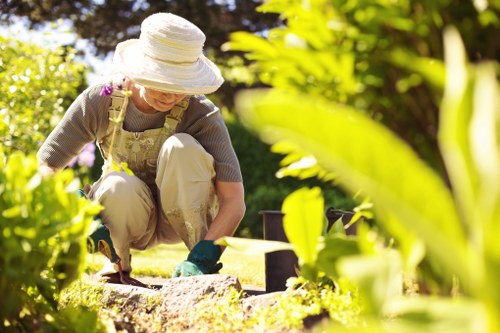
Landscape gardening in Mill Hill is an art form that blends creativity with functionality, transforming ordinary outdoor spaces into stunning retreats. Whether you’re looking to redesign your garden, create a peaceful sanctuary, or boost your property’s curb appeal, professional landscape gardening services can help you achieve your vision.
Mill Hill, known for its picturesque surroundings and vibrant community, offers the perfect backdrop for exquisite landscape designs. The local climate, soil conditions, and native flora provide a unique canvas for gardeners to craft beautiful and sustainable landscapes that thrive year-round.
Engaging in landscape gardening not only enhances the aesthetic value of your home but also promotes environmental sustainability. By incorporating native plants, efficient irrigation systems, and eco-friendly materials, you can create a harmonious balance between nature and design.

Why Choose Professional Landscape Gardening in Mill Hill?
Opting for professional landscape gardening services in Mill Hill ensures that your outdoor space is designed and maintained by experts who understand the local environment. Here are some compelling reasons to hire professionals:
- Expert Knowledge: Professionals have extensive knowledge of local climate, soil types, and plant species, ensuring that your garden thrives.
- Customized Designs: Tailored landscape designs that reflect your personal style and meet your specific needs.
- Time Efficiency: Save time by entrusting the planning, planting, and maintenance to skilled gardeners.
- Increased Property Value: A well-designed garden can significantly enhance the value of your property.
Investing in professional landscape gardening not only beautifies your home but also contributes to a sustainable and enjoyable outdoor living environment.
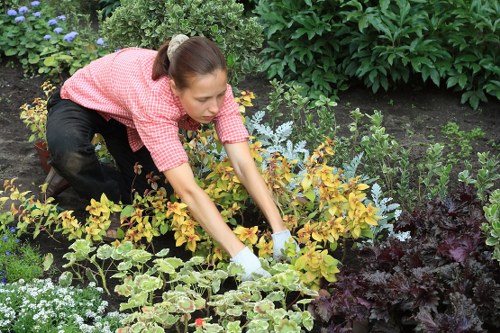
Key Elements of Landscape Gardening
Successful landscape gardening involves several key elements that work together to create a cohesive and beautiful outdoor space. These elements include:
1. Plant Selection
Choosing the right plants is crucial for a thriving garden. Consider factors such as sunlight, soil type, and water availability when selecting plants. Incorporate a mix of perennials, annuals, shrubs, and trees to add variety and depth to your garden.
2. Layout and Design
A well-thought-out layout ensures that your garden is both functional and aesthetically pleasing. Utilize principles of design such as balance, symmetry, and focal points to create an inviting space.
3. Hardscaping Features
Hardscaping elements like patios, walkways, and fences provide structure and functionality to your garden. These features also enhance the overall visual appeal and can serve as a foundation for other landscaping elements.
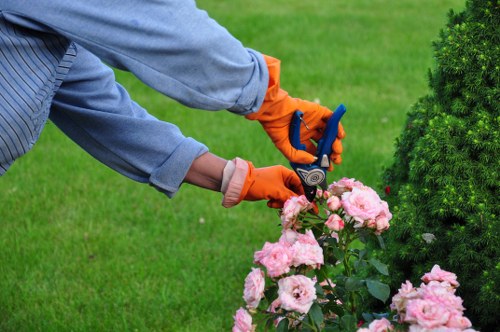
Design Trends in Mill Hill Landscape Gardening
Keeping up with the latest design trends can help ensure your garden remains stylish and contemporary. Popular trends in Mill Hill include:
- Sustainable Landscaping: Emphasizing eco-friendly practices such as rainwater harvesting, composting, and using native plants.
- Edible Gardens: Incorporating fruits, vegetables, and herbs into landscape designs to create functional and productive gardens.
- Outdoor Living Spaces: Creating areas for relaxation and entertainment with features like fire pits, outdoor kitchens, and comfortable seating.
- Vertical Gardens: Utilizing vertical space for planting, especially in smaller gardens or urban settings.
Staying informed about these trends allows you to incorporate modern elements that enhance both beauty and functionality in your garden.
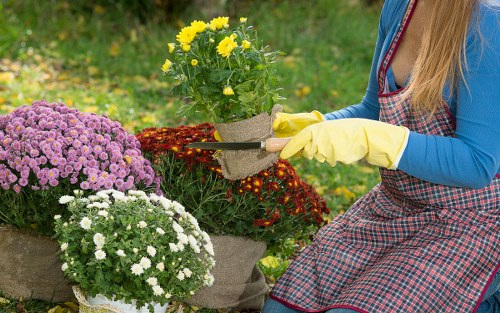
Maintenance Tips for Your Mill Hill Garden
Proper maintenance is essential to keep your garden looking its best. Here are some tips to ensure your landscape remains healthy and vibrant:
Regular Watering
Ensure your plants receive adequate water, especially during dry periods. Install an efficient irrigation system to manage watering needs effectively.
Pruning and Trimming
Regular pruning helps maintain the shape of your plants, encourages healthy growth, and prevents overgrowth that can lead to pest issues.
Weed Control
Keep weeds at bay by using mulch, hand-pulling, or applying environmentally-friendly weed killers. This prevents competition for nutrients and maintains garden aesthetics.
Fertilizing
Provide your plants with essential nutrients by applying appropriate fertilizers. This supports robust growth and vibrant foliage.
Pest Management
Monitor your garden for signs of pests and diseases. Use integrated pest management strategies to address issues organically and sustainably.
Consistent maintenance not only preserves the beauty of your garden but also ensures the longevity and health of your landscape features.
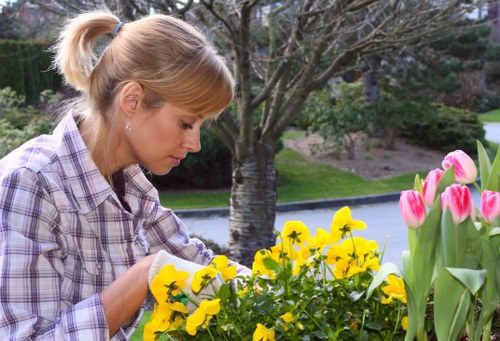
Choosing the Right Plants for Mill Hill
Selecting the appropriate plants is a foundational step in landscape gardening. Consider the following when making your selections:
- Climate Compatibility: Choose plants that thrive in Mill Hill’s climate, taking into account temperature ranges and precipitation patterns.
- Soil Conditions: Test your soil to determine its pH and nutrient content. Select plants that are well-suited to your soil type.
- Sunlight Exposure: Observe the sunlight patterns in your garden to position plants according to their light requirements.
- Maintenance Level: Consider the amount of time and effort you can dedicate to garden maintenance when selecting plants.
Incorporating a diverse range of plants not only enhances visual interest but also supports local biodiversity and ecosystem health.

Incorporating Hardscaping in Your Garden
Hardscaping elements add structure and functionality to your landscape. Key hardscaping features to consider include:
Patios and Decks
Create outdoor living spaces where you can relax, entertain, and enjoy the beauty of your garden. Materials such as stone, wood, and composite decking are popular choices.
Walkways and Paths
Guide visitors through your garden with thoughtfully designed walkways. Options include gravel paths, paved stones, and wooden stepping stones.
Fencing and Walls
Provide privacy and define garden boundaries with fences and walls. Choose styles that complement your overall landscape design.
Water Features
Incorporate elements like fountains, ponds, or waterfalls to add a sense of tranquility and attract wildlife to your garden.
Outdoor Lighting
Extend the enjoyment of your garden into the evening with strategically placed lighting. This not only enhances safety but also highlights key landscape features.
Integrating these hardscaping components creates a balanced and functional garden that serves as an extension of your living space.

Sustainable Practices in Landscape Gardening
Adopting sustainable practices in your garden design promotes environmental stewardship and long-term garden health. Key sustainable strategies include:
- Native Plants: Utilize native species that are adapted to the local climate and require less water and maintenance.
- Rainwater Harvesting: Collect and store rainwater for irrigation, reducing reliance on municipal water sources.
- Composting: Recycle garden waste and kitchen scraps to create nutrient-rich compost for soil improvement.
- Organic Fertilizers: Use natural fertilizers to nourish plants without harming the environment.
- Energy-Efficient Lighting: Install LED or solar-powered lights to minimize energy consumption.
Implementing these practices not only benefits the environment but also creates a resilient and self-sustaining garden ecosystem.

Seasonal Landscaping Tips
Maintaining a beautiful garden throughout the year requires attention to seasonal changes. Here are tips for each season:
Spring
- Plant new flowers and shrubs as the weather warms.
- Prune deciduous trees and shrubs before new growth starts.
- Apply mulch to retain soil moisture and suppress weeds.
Summer
- Water plants deeply and regularly during dry periods.
- Deadhead spent blooms to encourage continuous flowering.
- Maintain lawn health with regular mowing and fertilization.
Autumn
- Clear fallen leaves to prevent mold and disease.
- Plant bulbs for spring flowering.
- Prune perennials after they finish blooming.
Winter
- Protect sensitive plants from frost with covers or mulching.
- Plan your garden layout and order seeds for the upcoming year.
- Maintain garden tools and equipment.
Adapting your gardening practices to the seasons ensures that your landscape remains vibrant and healthy all year round.
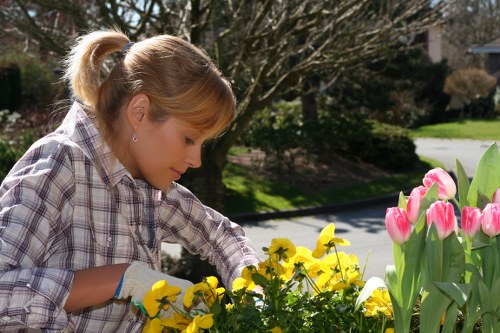
Enhancing Your Garden with Accessories
Garden accessories add personality and functionality to your landscape. Consider incorporating the following elements:
- Garden Art: Sculptures, decorative stones, and artistic installations can serve as focal points.
- Seating Areas: Benches, swings, and outdoor furniture provide spaces for relaxation.
- Planters and Containers: Use planters to add height and dimension to your garden design.
- Bird Feeders and Houses: Attract wildlife and add dynamic movement to your garden.
- Wind Chimes and Lanterns: Introduce gentle sounds and soft lighting for a serene atmosphere.
Thoughtfully selected accessories can enhance the aesthetic appeal and functionality of your landscape, making it a truly personalized space.
Choosing the Right Landscape Gardening Service in Mill Hill
Selecting a reputable landscape gardening service is crucial for achieving the desired results. Here are factors to consider:
- Experience and Expertise: Look for companies with a proven track record and knowledgeable staff.
- Portfolio: Review their past projects to assess their design style and quality of work.
- Customer Reviews: Read testimonials and reviews to gauge customer satisfaction.
- Services Offered: Ensure they provide the specific services you need, such as design, installation, and maintenance.
- Cost and Value: Compare quotes and ensure you’re getting good value for your investment.
Taking the time to research and choose the right service provider will help you create and maintain a stunning garden that meets your expectations.
Budgeting for Your Landscape Project
Establishing a budget is an essential step in planning your landscape gardening project. Here’s how to manage costs effectively:
- Define Your Scope: Clearly outline the extent of the project to avoid unexpected expenses.
- Prioritize Features: Identify must-have elements and consider phasing additional features over time.
- Get Multiple Quotes: Obtain estimates from several service providers to compare pricing and services.
- Allocate for Maintenance: Budget for ongoing maintenance to keep your garden in optimal condition.
- Consider DIY Options: Handle smaller tasks yourself to reduce costs without compromising quality.
By carefully planning and allocating your budget, you can achieve a beautiful landscape without overspending, ensuring long-term satisfaction and value.
Maximizing Small Gardens in Mill Hill
Even with limited space, you can create a stunning and functional garden. Here are strategies to maximize small gardens:
- Vertical Gardening: Use trellises, wall planters, and hanging baskets to add greenery without taking up floor space.
- Multifunctional Spaces: Combine seating areas with planting beds or incorporate storage solutions into your design.
- Light-Colored Surfaces: Reflect light with brighter colors to make the space feel larger and more open.
- Compact Plant Varieties: Choose dwarf or compact plant varieties that fit well in smaller spaces.
- Mirrors and Reflective Surfaces: Use mirrors or water features to create the illusion of more space.
With thoughtful planning and creative design, small gardens can be transformed into enchanting retreats that feel spacious and inviting.
Integrating Technology into Landscape Gardening
Modern technology can enhance the efficiency and aesthetics of your garden. Consider incorporating the following:
- Smart Irrigation Systems: Automate watering schedules based on weather conditions to conserve water and ensure optimal plant health.
- Outdoor Lighting Control: Use smart lighting systems to adjust brightness and color, creating different moods and improving security.
- Garden Monitoring: Utilize sensors to monitor soil moisture, temperature, and plant health, allowing for timely interventions.
- Automated Maintenance Tools: Employ robotic lawn mowers and other automated tools to reduce manual labor.
Integrating technology into your landscape gardening efforts can streamline maintenance, enhance functionality, and create a more interactive and dynamic garden environment.
Creating a Wildlife-Friendly Garden
A wildlife-friendly garden supports local biodiversity and creates a vibrant ecosystem. Here’s how to make your garden appealing to various creatures:
- Plant Diversity: Include a variety of plants to provide food and shelter for different species.
- Water Sources: Install birdbaths, ponds, or shallow dishes to supply water for wildlife.
- Habitat Features: Add birdhouses, bat boxes, and bee hotels to encourage nesting and habitation.
- Native Plants: Use native species that support local insects, birds, and other wildlife.
- Avoid Pesticides: Minimize or eliminate the use of chemical pesticides to protect beneficial insects and animals.
By fostering a wildlife-friendly environment, your garden becomes a sanctuary for various species, contributing to a balanced and thriving ecosystem.
Personalizing Your Garden Design
Personal touches make your garden uniquely yours. Here are ideas to personalize your landscape:
- Themed Gardens: Choose a theme such as Mediterranean, Japanese, or cottage style to guide your design choices.
- Custom Seating Areas: Design seating spaces that reflect your personal comfort and style preferences.
- Unique Plant Combinations: Experiment with color palettes and plant textures to create a distinctive look.
- DIY Projects: Incorporate handmade elements like mosaic paths, painted pots, or repurposed furniture.
- Memory Gardens: Dedicate areas to commemorate loved ones or significant life events with personalized plantings and markers.
Infusing your personality into the garden design ensures that your outdoor space resonates with your identity and provides a meaningful and enjoyable environment.
Final Thoughts on Landscape Gardening in Mill Hill
Embracing landscape gardening in Mill Hill offers endless possibilities for creating a beautiful, functional, and sustainable outdoor space. By leveraging professional expertise, incorporating sustainable practices, and personalizing your garden design, you can transform your property into a stunning sanctuary that enhances your lifestyle and complements the natural beauty of Mill Hill.
Contact us today to begin your landscape gardening journey and turn your vision into reality. Whether you’re starting from scratch or looking to revitalize an existing garden, our team of experts is here to assist you every step of the way. Book your service now and take the first step toward a breathtaking outdoor environment tailored to your needs.

